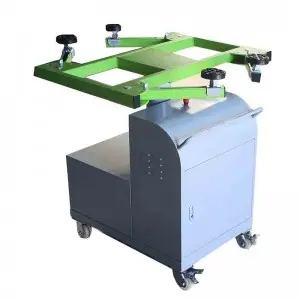Cylinders are fascinating three-dimensional shapes found everywhere in modern technology and architecture. Defined as a geometric solid that comprises two parallel bases, and a curved surface that connects them, cylinders are widely used in various fields and applications. Whether you look at a car engine, a water bottle, a hydraulic system, or even a roller coaster, cylinders are there, making our lives easier and more enjoyable. In this article, we will dive deeper into the world of cylinders by exploring their properties, applications, and history.
First, let’s talk about the geometry of cylinders. The two bases of a cylinder are usually identical circles, but they can also be ellipses, hexagons, or any other shape. The height of a cylinder is the perpendicular distance between the two bases. The curved surface of a cylinder is called its lateral surface, and its area can be calculated using the formula A = 2𝜋rh, where r is the radius of the base and h is the height. The volume of a cylinder is given by the formula V= 𝜋r²h, which means that the volume depends on the radius and the height of the cylinder. Cylinders also have other properties, such as surface area, slant height, and cross-sectional area, that are useful in various calculations and equations.

Exploring the Fascinating World of Cylinders

Exploring the Fascinating World of Cylinders
One of the most common applications of cylinders is in engines and motors. For example, the internal combustion engine in a car works by converting the energy from fuel combustion into mechanical energy that drives the car’s wheels. The engine contains many cylinders arranged in a line or a V-shape, each of which has a piston that moves up and down to compress and ignite the fuel mixture. Another example is the hydraulic cylinder in heavy equipment such as cranes and excavators. These cylinders use pressurized fluid to create a pushing or pulling force that can move heavy loads with precision and control. Cylinders are also used in pneumatic systems that rely on compressed air to power tools and machines, such as nail guns, paint sprayers, and air compressors.

Exploring the Fascinating World of Cylinders
Cylinders are not just limited to industrial or mechanical applications. They also play an important role in architecture and design. For example, many tall buildings have cylindrical or curved shapes that provide structural strength and aesthetic appeal. The famous cylindrical towers of Dubai, such as the Burj Khalifa and the Cayan Tower, showcase the beauty and versatility of this shape. Cylindrical columns have been a staple of classical architecture for millennia, as they provide an elegant and proportionate support for buildings. In contemporary design, cylinders are used in furniture, lighting, and decorative objects to create a sense of symmetry and harmony in the space.
The history of cylinders goes back thousands of years, to ancient civilizations like Egypt, Greece, and Mesopotamia. These cultures used cylindrical shapes in their architecture, pottery, and other crafts, inspired by the natural forms of trees, rocks, and fruits. The Greeks, for example, developed the Corinthian column, which features a decorative capital in the shape of acanthus leaves, on top of a cylindrical shaft. The Egyptians made cylinder seals from stone or clay, which they used to stamp their images and symbols on documents and art. The Mesopotamians created cylindrical bricks made of mud, which they used to build walls and houses.
In conclusion, cylinders are a fascinating and ubiquitous shape that we encounter every day, whether we realize it or not. From car engines to skyscrapers, from hydraulic systems to pottery, cylinders play a vital role in modern technology, architecture, and culture. By understanding their geometry, properties, and applications, we can appreciate their beauty and ingenuity and explore new ways to use them in the future.car quick lift
